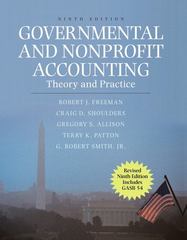Part 1: Read the following information and answer the questions that follow. You have receme joined as a Trainee Accountant at Accountants In Action in the Huon Valley, with two other Trainee Accountants who are currently studying accounting at the University of Tasmania. As a part of the training, your manager has given your team a task of recording the transactions that occurred in a local producer's business Green Hills Produce for January ZDED. Your manager informed your team that this business was opened by Mr Johnno Linn, on the 1'\" of January 2021] and he is the sole owner of this proprietorship. Green Hills Produce sells local fresh produce and condiments to local customers. The manager has supplied you with the following information and the tasks allotted to your team are provided below. Note: It is assumed the Green Hills F'roduoe is not registered for GST. Required: Complete one Excel workbook with three linked worksheets (1. transactions, 2. Income Statement and 3. Balance Sheet) for the month of January 2020 using the information below. Use formulas for calculations and format the workbook to create a positive visual effect. During January 2020, the following transactions occurred at Green Hills Produce: No. Date Transactions 1 Jan 1 Mr Linn contributed $25,000 cash to start the business. 1 The business purchased inventory of fresh produce on credit $5,000. 3 Mr Linn purchased packaging supplies (jars, labels, boxes and bags) using 1 cash, $1,500. 4 2 The business purchased a truck using a bank loan $25,000. 5 2 Cash sales $1,500. This inventory had a cost price of $750. Sold vegetables and condiments to the local aged care facility $2,000. This 6 customer is allowed credit and will pay in two weeks. This inventory had a 2 cost price of $1000. 7 3 Credit sales $ 2,100. This inventory had a cost price of $1,050. 3 Purchased produce inventory on credit $3,000. 9 7 Cash collected from customers $2,000 related to Jan 2 credit sales. 10 Mr Linn paid $250 cash to buy personal groceries from Woolworths supermarket. 11 9 Paid $2,000 cash salary to employees. 12 11 Paid $9,000 cash in advance for business insurance for the full year ahead.13 12 Mr Linn paid $3,000 for his personal home insurance. 14 13 Paid $2000 cash for rent for the business premises. 15 18 Paid $5,000 to the supplier related to the inventory purchased on Jan 1. 16 Received $4,000 cash in advance from a customer for produce to be 19 provided to them in a few days. 17 20 Received $2,000 from the client related to Jan 3 sales. 18 21 Mr Linn withdrew $1500 from the business for his personal use. 19 Paid cash for the petrol expense $500, postage $100 and electricity bill 22 $1000 for the business. 20 23 Purchased office supplies $200 on credit. 21 Revenue of $4,000 earned from the customer related to Jan 19 transaction. 24 This inventory had a cost price of $2000. 22 25 Customer paid the rest of the amount related to January 3. 23 26 The business purchased equipment (rotary hoe) for $5,000 via a bank loan. 24 26 Recorded credit sales $3,000. This inventory had a cost price of $1,500. 25 27 Mr Linn invested $40,000 personal cash in the business. 26 Mr Linn contributes his personal truck to the business. A valuer has 28 assessed that the fair value of the truck is $23,000. 27 29 Paid for office supplies purchased on Jan 23. 28 30 Collected cash from the customers related to Jan 26 credit sales. 29 30 Paid $2,000 cash wages to employees. 30 Office supplies on hand at the end of January (what was remaining) 31 amounted to $50. 31 31 Bank loan interest accrued for the month of January amounts to $125. 32 31 Prepaid insurance used $750.33 31 The depreciation expense for the trucks, related to this month, should be combined and calculated using a total residual value of $12,000 with 4 years of useful life. Assume both trucks were purchased at the beginning of the month. There is no need to consider depreciation on the machinery until the end of the year










